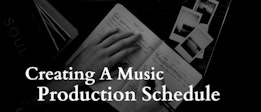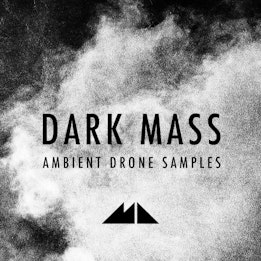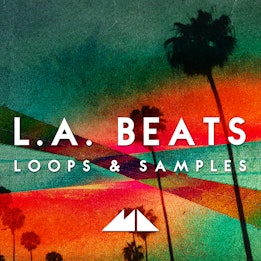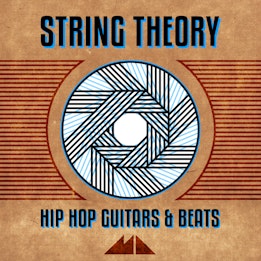
Noise. We all know what it is. Or do we? To a Hip Hop-head, the sound of vinyl static is like welcoming an old friend into your home, all warm and fuzzy; for a student trying desperately to finish a paper however, the drone of fellow students in the library is nothing but an agonising distraction.
Noise takes many forms, even in a musical sense - white and pink noise are just two types of more or less evenly distributed sonic energy across the full audible frequency range (think of a radio failing to pick up a station), probably the most obvious form of the term.

Then we have distortion, from subtle hints of overdrive on a synth to full blown guitar aggression - broader still, noise is often used as a synonym for sound itself, usually indicating something indistinct, obscured or in some way falling outwith the realm of typical, everyday sounds.
The Noisy Life
I must confess, I love noise. When used consciously, it can produce effects ranging from the calming to the overwhelming, making it a most powerful tool in the belt of the modern music producer.
Today, I want to take you through 5 quick tips for bringing the noise to your music in constructive ways, from the delicate and subtle, to the powerful and consuming. Let’s fire away!

1. Analog Sampling
Probably my favourite use of noise in music is something I mentioned in my intro - vinyl static or crackle as etched into the samples of Hip Hop productions. When used subtly, I just find the sound extremely inviting, and it instantly helps to add warmth, movement and an organic quality to a track.
This type of noise occurs when samples are recorded directly from older analog audio sources, such as vinyl records, magnetic tape and so on, wherein the technology does not possess sufficient noise reduction facilities to render the noise floor inaudible.
You can find countless examples of this in classic Hip Hop recordings but here’s an example from one of my favourite Hip Hop producers of today, Knxwledge:
To get this type of noise into your music, get yourself a record or tape player with an aux or headphones output, find some old media to sample, and plug the cable directly into one of your audio interface’s inputs - depending on the age of your equipment and media, this should be enough to get some vintage sparkle into your sampling.
If you’re not able to source this sort of equipment, then you can always pick up any of our sound packs containing vinyl noise, such as LA Beats or String Theory, as well as checking out our free Ableton Vinyl Rack.
2. Hot Sampling
A further application of the above technique is what I call ‘hot sampling’, where the gain level of the source audio is deliberately taken beyond comfortable limits to accentuate the noise floor.
When doing this of course, you need to be careful of not damaging your equipment or ears, but what you might find is that your equipment actually exhibits a built-in limiting function, allowing you to really crank the noise whilst stopping the audio from spilling over the 0dB mark.
Here’s an example from another slice of contemporary Hip Hop, this time from Jitwam:
If you find your equipment doesn’t have this limiting function, you can always add your own compression and limiting plugins onto the recording channel in your DAW to compensate for the gain increase.
These VSTs will inevitably impart their own characteristics onto the resulting sound though, as every plugin will deal with excessive volume in different ways. So, it’s worth experimenting with different plugs and presets to achieve the sound you want.

3. Saturation / Flooding The Limiter
This deliberate limiting technique can of course be applied to your own playing and recording, either with acoustic instruments or synths both hardware and digital.
Add a limiter on your recording channel and then crank the gain of your audio interface input, or digital synth, depending on what you’re trying to do - if you can’t find a gain control, you can add a compressor before your limiter in the plugin chain, setting your ratio to 1:1 so no actual compression takes place and pushing the gain control up.
Flying Lotus’ Tea Leaf Dancers is one of my favourite examples of this:
Listen to those giant synth chords - they actually crackle and clip a little due to this process, but it adds a liveliness to the part that would have been missing otherwise.
There are plugins which mimc this process with a high degree of accuracy, giving you direct control over the quality of the saturation character - Softube’s free Saturation Knob is my undisputed favourite plugin in this category. Here’s keys part from a previous tutorial of mine, demonstrating the plugin at work:
4. Noise Oscillators
Another way to add noise into your productions is to add a deliberate noise track into your session, layering with care to make sure the sound gels with the rest of your mix.
You can use noise generator plugins to do this, such as Melda Productions’ free MNoiseGenerator VST, but my favourite way to do this is to use a synth plugin that has a selectable noise oscillator. I prefer this method because you will be able to run the noise through all the filters and effects the synth has to offer, bringing some movement into your sound rather than just a simple slab of noise.

There are lots of synths with this capability, such as NI’s Massive or Arturia’s excellent V collection of analog emulations - placing additional effects on the noise track such as chorus really helps to liven things up more, as well as the classic sidechain compression off of the kick drum so your noise doesn’t get in the way too much.
My recent demo for our Lo Life - LoFi House Loops sample pack features lots of this technique, and of course features a hots of ready-made noise and vinyl static loops that you can slot straight into your productions:
Again, another great alternative method to using a synth is to use noise bed samples and drones - our Ambient sound packs are a great place to find these sorts of textures for insertion into your latest track.

5. Distortion
This brings me to my final method for adding some quick noise into your music - the all-conquering distortion effect.
Now, you can simply slap any old distortion plugin onto your track and crank the drive control for instant gratification, or you can keep things more restrained for just a hint of those lovely upper harmonics.
This is the great power of distortion - it can be tamed but if allowed, it will run riot across your productions!
Examples of both can be found in the music of Jefre Cantu-Ledesma, a true noise-head if ever there was one. Lots of his music features synths, drum machines and field recordings being pushed through distortion units to great a crackly, homogenous sound, somewhat akin to taking a sonic bath in my opinion!
In this track, the distortion is subtler, applied mainly to the background sound with the drum machine and bass parts being left largely unaffected:
In the track Prelude from the same EP, the distortion is much more aggressive, creating a glitchy, overwhelming effect:
I find distortion is often well-used as a send effect - try throwing some signal from a murky pad or keys part into a distortion unit loaded on a send track, mixing carefully just to heighten the brightness of the dry part. Works wonders!
Noise All Around
I hope you’ve enjoyed my brief tour through 5 simple ways to bring the noise in your music - use them, abuse them and otherwise get noisy. It’ll feel good, I promise!







